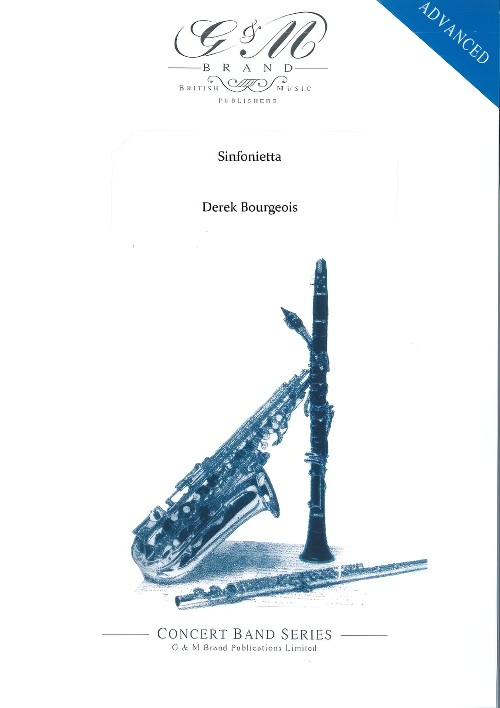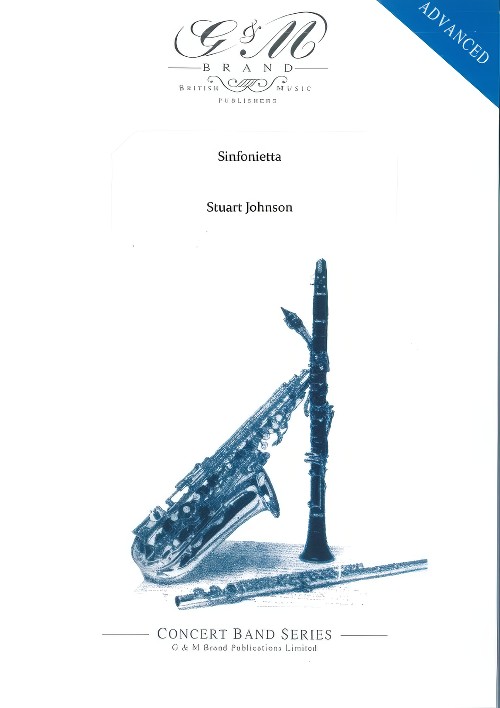Results
-
 £144.95
£144.95Sinfonietta (Concert Band - Score and Parts) - Bourgeois, Derek
This substantial work is amongst the most important British contributions to the concert band repertoire. Written in 1983 to fulfil a commission from the British Youth Wind Orchestra, this Sinfonietta has brought the house down whenever it has been performed. The music is tonal, approachable and tuneful, as players and audiences will testify. Your library cant afford to be without this!
Estimated dispatch 7-14 working days
-
 £104.95
£104.95Sinfonietta (Concert Band - Score and Parts) - Johnson, Stuart
This early Johnson, Stuart work is now standard repertoire. Each movement of?Sinfonietta for Wind Orchestra?can be played separately, or 3 movements can be used as a suite. Challenging yet tuneful, this piece will always please audiences and bands.
Estimated dispatch 7-14 working days
-
 £28.95
£28.95Sinfonietta (Concert Band - Score only) - Bourgeois, Derek
This substantial work is amongst the most important British contributions to the concert band repertoire. Written in 1983 to fulfil a commission from the British Youth Wind Orchestra, this Sinfonietta has brought the house down whenever it has been performed. The music is tonal, approachable and tuneful, as players and audiences will testify. Your library cant afford to be without this!
Estimated dispatch 7-14 working days
-
 £20.95
£20.95Sinfonietta (Concert Band - Score only) - Johnson, Stuart
This early Johnson, Stuart work is now standard repertoire. Each movement of?Sinfonietta for Wind Orchestra?can be played separately, or 3 movements can be used as a suite. Challenging yet tuneful, this piece will always please audiences and bands.
Estimated dispatch 7-14 working days
-
 £84.99
£84.99Der Mond ist Aufgegangen (Concert Band with Optional Choir - Score and Parts) - De Haan, Jacob
The lyrics to Der Mond ist Aufgegangen (The Moon Is Risen) come from Matthias Claudius, one of Germany's best-known poets. The 1779 poem with the original title Abendlied (Evening song) was set to music by Johann Abraham Peter Schulz and has become perhaps the most famous Abendlied in the German-speaking world. Johann de Haan has created a delightful arrangement of this poignant melody. The wind orchestra can optionally be accompanied by a choir (Dutch and German texts are provided).Duration: 3:30
Estimated dispatch 7-14 working days
-
 £70.50
£70.50Boz Dances (from Master Humpreys Clock) (Concert Band - Score and Parts) - Binney, Malcolm
Master Humphrey's Clock was inspired by the weekly periodical produced by Charles Dickens in which appeared a miscellany of short sketches. Malcolm Binney's work was commissioned for the Kent County Wind Orchestra, it therefore seemed appropriate that a piece writen especially for Kentish performers, should draw, for inspiration on the literarary works of one of the County's most famous inhabitants. The Boz Dances (Boz was a pseudonym under which Dickens wrote) are taken from all four parts of extended work and explore the miriad of personalities, childhood fantasies of theatre, fairy tales and imagined scenes so loved by Dickens. Great fun, inspired, exhilarating and thrilling to listen to.Duration: 10:30
Estimated dispatch 7-14 working days
-
 £32.95
£32.95CELEBRATION (Prestige Concert Band Extra Score) - Sparke, Philip
Extra Score. Commissioned by the Tokyo Kosei Wind Orchestra. Virtuosic in nature. Performance time 10:54" (Recorded on QPRM120D THE SWORD AND THE CROWN , Central Band of the Royal Air Force)
Estimated dispatch 7-14 working days
-
 £164.95
£164.95CELEBRATION (Prestige Concert Band) - Sparke, Philip
Commissioned by the Tokyo Kosei Wind Orchestra. Virtuosic in nature. Performance time 10:54" (Recorded on QPRM120D THE SWORD AND THE CROWN , Central Band of the Royal Air Force)
Estimated dispatch 7-14 working days
-
 £164.95
£164.95CHIVALRY (Prestige Concert Band - Score and Parts) - Ellerby, Martin
This 'Symphonic Tone Poem for Brass and Percussion' was commissioned by Philip Biggs and Richard Franklin for the 2003 All England Masters Brass Band Championship. The work transfers well to the concert band and is already being featured around the world. It is based on two principle themes of love and war which compete against each other in what can be broadly described as a cinematic structure.Performance time 14'05"Recorded on QPRM 150D CHIVALRY, Royal Northern College of Music Wind Orchestra
Estimated dispatch 7-14 working days
-
 £209.95
£209.95Clarinet Concerto (Ellerby) (Prestige Concert Band - Score and Parts) - Ellerby, Martin
The opening 'Carousel' takes a leaf out of the American minimalist composers' book and is energetic and resourceful throughout, conjuring up images of a fairground ride that is not too much of an intrepid adventure! The central 'Cameo' presents and re-presents a delicate, highly legato, melisma for the soloist. A somewhat brooding central episode provides both a moment of contrast and the opportunity for the soloist to deliver some free cadenza-type material before returning to the security of the opening calm. The closing 'Charabanc' is a freely developed rondo-style finale embracing influences from jazz and other light music forms. Listeners are encouraged to use their own imagination, as it is intended to be whatever you want it to be!Performance time 15'15"This work was commissioned by and is dedicated to Linda Merrick and is featured on the recording QPRM137D LINDA MERRICK, Linda Merrick and the RNCM Wind Orchestra
Estimated dispatch 7-14 working days
